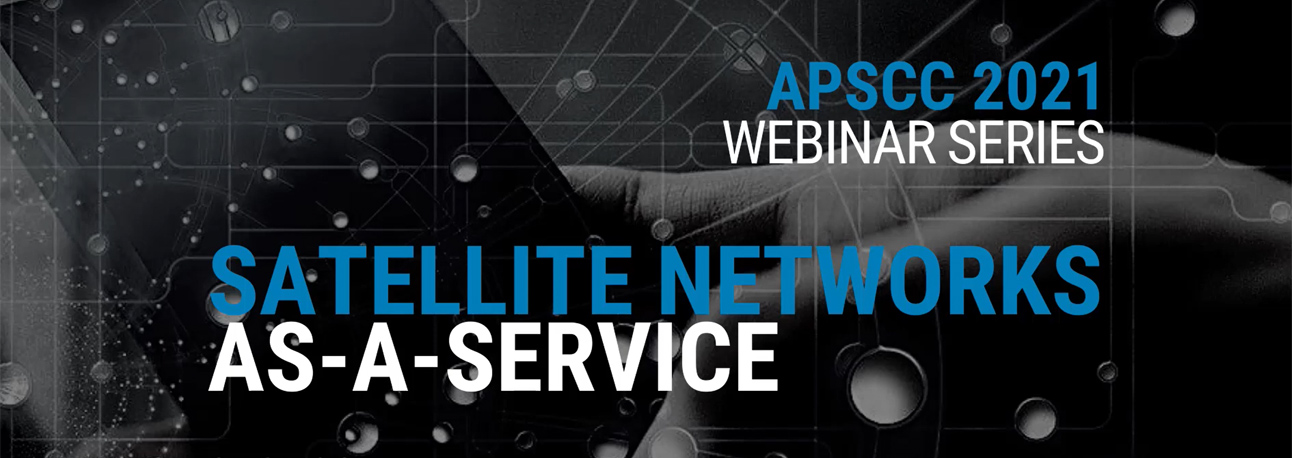We are all well aware that our industry is in the middle of a shift. We’re well versed in the new era of LEO and MEO and the changes this will bring about but there’s another major shift that is occurring in the way we do business. Satellite Networks as-a-service is a new approach that is moving towards the ‘cloudification’ of satellite services, offering unprecedented flexibility for users of satellite technology.
Satellite Networks-as-a-Service was the focus of discussion during the recent APSCC webinar series, where moderator Brad Grady of NSR was joined by PJ Beylier (Eutelsat), Joe Apa (AXESS Networks), Ng Kheng Ghee (Singtel) and our own President and CCO, Thomas Van den Driessche. On this occasion, the panelists were focusing on the provision of Satellite Networks as-a-service for the maritime sector, but this will have a far-reaching impact across all verticals served by the satellite community.
Eutelsat’s recent launch of its own satellite as a service platform, ADVANCE, will see enormous flexibility for service providers. Enterprises and governments rely on satellites to connect them to the rest of the world and perform critical business and administrative activities. And as mobile backhaul requirements escalate, network operators are facing increasing pressure to provide backhaul connectivity in rural locations. Eutelsat ADVANCE leverages the satellite operator’s global network and coverage to provide high-end connectivity to users beyond the range of terrestrial networks, through an innovative satellite network-as-a-service experience.
We’ve cherry-picked some key points from the webinar that we’d like to share with you that help explain what satellite as a service is and the impact it will have.
 What is satellite as a service?
What is satellite as a service?
The inexorable rise of connectivity is coupled with an inexorable rise in demand to connect people, businesses and nations. Satellite Networks-as-a-service offers users all the benefits of satellite assets without the huge outlay. With no need for dedicated technical teams or to design build and launch a satellite, capex is kept to a minimum. The service is based on subscription to give ultimate flexibility to the organizations using it and they may use it as much or as little as they want.
What’s driving it?
Firstly, it’s being driven by customers and their requirement for applications. From a maritime perspective, vessel operators need the whole package when it comes to connectivity as well as customized applications that can help them to address their main challenges. Through Satellite Networks as-a-service, they can offer crew and passenger internet as well as a raft of important applications from cyber security to protecting against piracy. For any Service Provider, value added services are critical as this is what will enable them to stand apart from their competition. On top of this, Service Providers can also opt to add more key benefits such as 24- hour support and experiences engineers to offer troubleshooting services.
What does it mean for Service Providers?
Satellite Networks as-a-service mean flexibility and cost-effectiveness for Service Providers. With no long-term commitment and no big start-up capex, this enables Service Providers to create their own differentiated offering with the complex service provision that is required by their end users. The network is quite simply there when its needed. In an era where people want to do more yet pay less, shared infrastructure and networks create much-needed value, especially at a time where demand is only on the up.
What technology will make Satellite Networks as-a-Service a success?
The key to the success of these networks will be in automation and virtualization and therefore increased standardization to ensure that this can happen. As was picked up during the webinar, there is still a great deal that is done manually within the satellite industry.
A key aspect is transforming hardware-based terminals to software-defined architectures with embedded form factors, embracing virtualization technologies to carry out the modulation and processing within a fully virtual infrastructure. Virtualized ground infrastructure will be completely agnostic from the application that runs over it, modified depending on the use case of the customer at the moment it is needed.
Success will also lie in dynamic resources and services, especially in a sector such as maritime, where special consideration must be taken into account in terms of the movement of a vessel. Cloud provision will also be absolutely core to the success of Satellite Networks as-a-service and it’s critical that ground segment providers are factoring this into their technological advancements. Another potential barrier-to-entry could be the cost of the antenna. Flat panel and phased array antennas are still costly so prices will need to fall to enable mass deployment.
At ST Engineering iDirect, we are supporting Satellite Networks as-a-service concepts, such as Eutelsat ADVANCE with our increasingly virtualized hubs and our use of cloud architecture in our network management systems. Our hubs and modems support multi-orbit constellations with the ability to cater for mobility applications such as maritime with features including automatic beam switching and our mobility management platform.
To find out more about this compelling new offering and how it is set to transform access to satellite networks, watch the webinar here:

 What is satellite as a service?
What is satellite as a service?